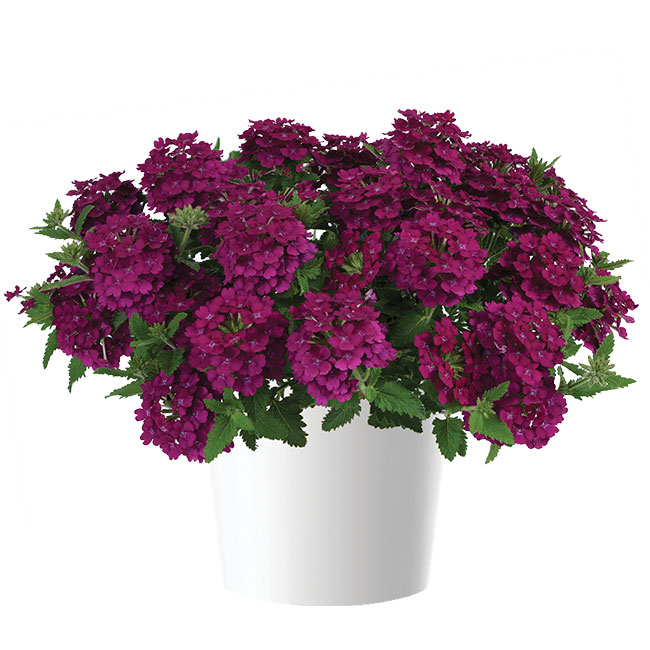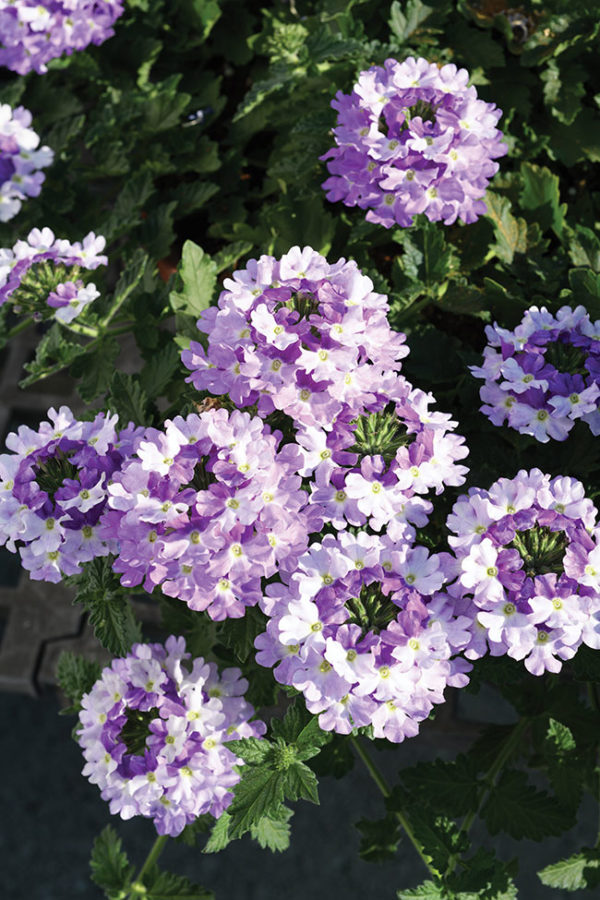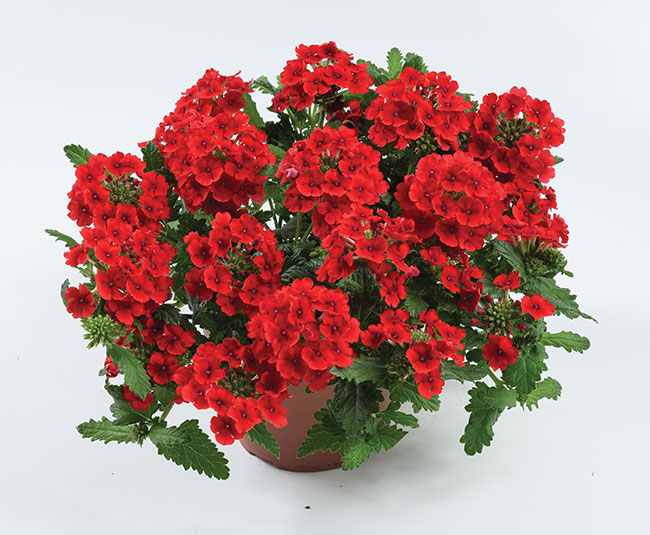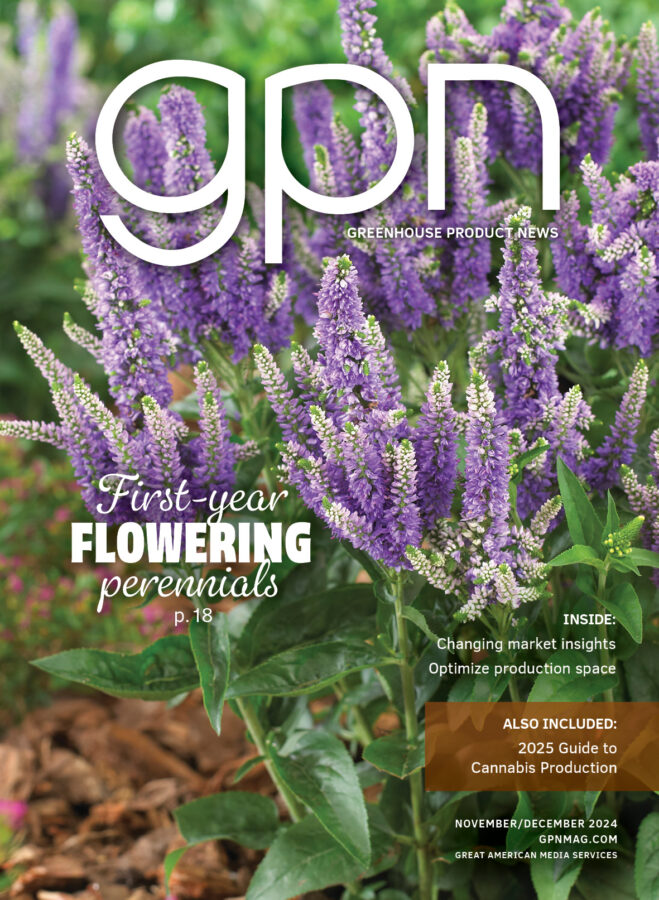
Culture Report: Vanessa Compact Bourdeux
Verbena used to be a challenge to grow and many growers were stepping away from this crop due to powdery mildew, cycling out of color, and propagation issues. If you grew verbena in the past, these challenges will sound familiar. The Vanessa series from Danziger is a result of a decade-long breeding initiative to improve it for both growers and consumers. Breeding and selection was a multi-step process to address these issues. Now a new and improved generation of verbena has arrived — and the name is Vanessa.
Vanessa is trialed around the world to test for mildew tolerance. Strains vary regionally and globally, making this an important part of the selection process. If mildew is discovered in any of these trials, the variety is dropped from consideration. Equally important is cycling of color. There is nothing as disappointing for a grower than to be ready to ship and then a few days later the plants have gone out of bloom. To be selected as Vanessa, the variety must show color not just in peak season but all summer long, even into the heat.
Vanessa is available in both a full-sized well-branched mounding habit that is well-suited for gallons and larger. Vanessa compact features the same strong branching with a controlled growth habit that works well in smaller pots with little to no need for PGR.
Propagation

This verbena is relatively easy to root and has no special needs. We recommend following the same basic protocols for rooting that are used for other crops like petunia, calibrachoa and others.
- Use well-drained soil with a complete profile of micronutrients.
- Spray the day of sticking with a fungicide to protect from botrytis. This is important because during the transplant process plants incur damage that opens it up to fungus. Treat the same day as sticking as botrytis can be active and start damaging plants in as little as 3 hours.
- Try to start with a soil pH around 5.8. Verbena can be an iron inefficient plant.
- Tray sizes can vary from a 200 cell and larger or can be direct stuck in packs and 4-inch pots.
- Soil temp of 72° F (22° C) is best for rooting but should only be maintained until signs of roots at around seven to eight days after sticking. After roots appear, drop the temp to 65 to 68° F.
- Although pinching may not always be required, it will not hurt if you do. In the unlikely case a crop needs PGR, we recommend B-9 at lower rates in the 1,500 to 3,750 ppm range.
- Liners should be ready to transplant in four to five weeks depending on temperature.
Growing On
Once the liner is ready it is important to transplant as soon as possible.
- Plant in well-drained complete soil. A starter charge in the soil is beneficial but not necessary if you have a way to deliver fertilizer. Water in thoroughly to activate lime and other amendments in the soil.
- Spray the day of transplanting with a fungicide to protect from botrytis. This is necessary for the same reason to treat in the prop stage; damage to the plant opens it up to botrytis quickly.
- It is a good practice to go over the crop after transplant to fix any damaged or missing plants. A good start means a good finish.
- Protection from fungus gnats and shore flies is always recommended, especially on new plantings. These pests are attracted to new soil to lay their eggs. Follow all label recommendations.
- Weekly scouting is recommended for insects, fungus, disease and unwanted growth.
Fertilization

Fertilization is a tricky topic without knowing the quality of the water being used to irrigate. A grower that is injecting acid of some form to bring down the alkalinity and pH can use a basic 15-5-15 feed.
Growers who are unable to have acid in the irrigation water will need to rely on an acid feed such as 20-10-20 or even 20-20-20. Long term use of these fertilizers can be damaging and create unwanted growth.
The best options are:
- Alternating the acid feed with the basic feed two to one or more
- Using citric acid to mix in the feed barrel (other acids cannot be mixed with your fertilizer)
Remember that acid feeds are energy that make a plant grow; however, it won’t store as much as it will with a basic cal/mag feed.
Finish Time
Finish time, as is true with all plants, is subject to temperature. Heat means development. At 68 to 72° F a grower can finish a verbena stick to flower in 10 to 12 weeks. At 60° F it will take 14 to 15 weeks. As a general guideline, from a rooted liner it takes four to 10 weeks based on temperature.



 Video Library
Video Library 



















